I. Price Comparison Between 304 and 443 Stainless Steel
| Material thickness | SUS443/2B | SUS304/2B |
| 0.3 | 19,000 | 25100 |
| 0.4 | 18,500 | 23600 |
| 0.5 | 17,500 | 22800 |
| 0.6 | 16800 | 22,500 |
| 0.7 | 16800 | 22400 |
| 0.8 | 16600 | 22200 |
| 0.9 | 16,500 | 22100 |
| 1 | 16,500 | 22100 |
| 1.2 | 16300 | 21900 |
| 1.5 | 16100 | 21700 |
| 1.8 | 16100 | 21700 |
| two | 16,000 | 21700 |
| 2.2 | 16,000 | 21700 |
| 2.5 | 16,000 | 1700 |
| 3 | 16,000 | 21700 |
| >3.0 | 17,000 | 23200 |
Unit: CNY/Ton.
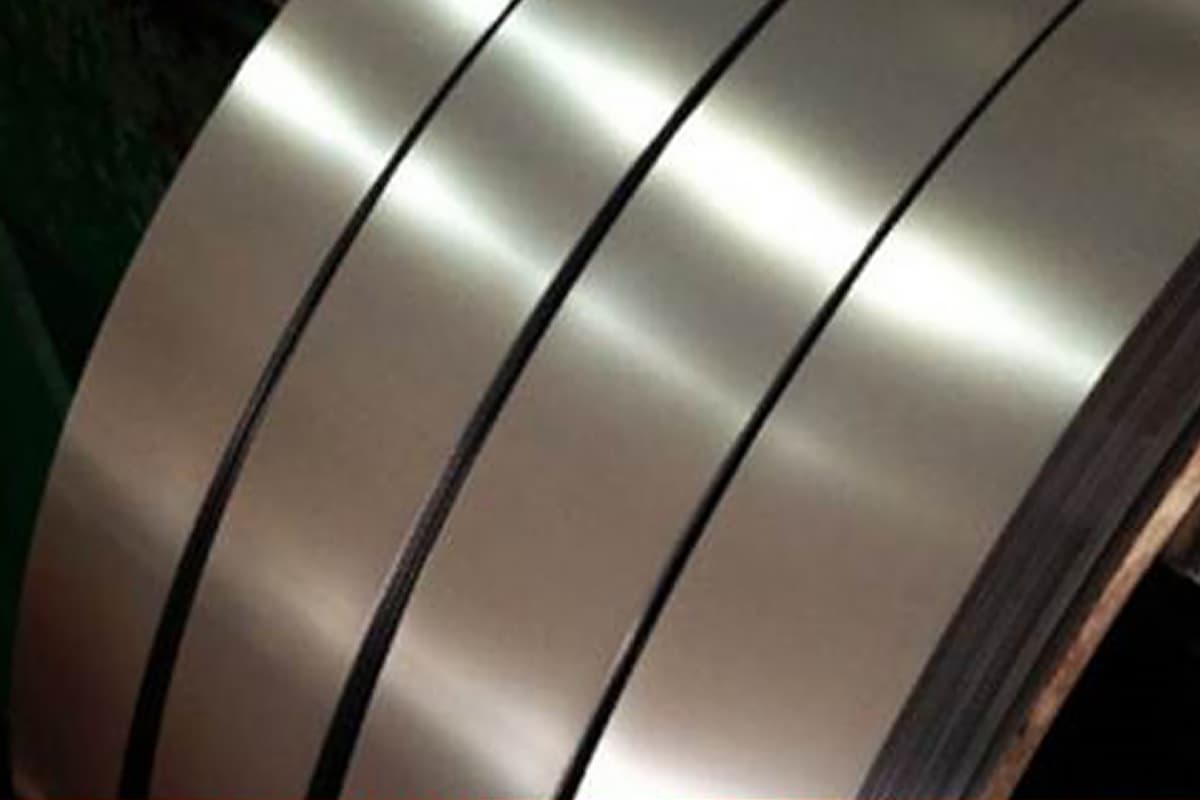
II. Introduction to 304 Stainless Steel and 443 Stainless Steel
304 is a common and widely used type of steel, commonly known as 304 Stainless Steel. To maintain the inherent corrosion resistance of stainless steel, the steel must contain more than 12% chromium and above 8% nickel.
304 Stainless Steel is widely used in everyday life, for example in high-quality stainless steel tableware, external grilles, etc., and also in the manufacture of equipment and parts that require good combined performance (corrosion resistance and formability). .
However, the constant fluctuation of the international nickel price has also affected the price of 304 since nickel is a limited resource. Consequently, the general price trend of 304 Stainless Steel is increasing, which is one of the significant factors limiting its development.
Given the current instability in the international market for stainless steel raw materials and increasingly fierce competition, the demand for reducing material costs is becoming more urgent among users. End users are becoming more detailed in their requirements for stainless steel materials.
Therefore, there is an urgent need for a product that can replace 304 stainless steel. Our company, in collaboration with JFE and TISCO of Japan, developed 21CT (trade name: SUS443) to solve this problem. The 21CT was successfully developed in September 2005, with official samples provided for customer testing beginning in January 2006. By November 2006, it had been widely accepted and used by consumers.
III. Main Features of 443 Stainless Steel (21CT)
1. The chromium content has been increased to 21%, showing excellent corrosion resistance similar to 304 stainless steel, and its corrosion resistance is better than 304.
2. Impurities such as carbon and nitrogen have been reduced and elements such as titanium and copper have been added, significantly increasing its corrosion resistance.
3. 21CT belongs to the 400 ferritic system, with the brand name SUS443, it has the characteristics of ferritic stainless steel and its mechanical properties are superior to SUS430.
4. As there is no addition of nickel, its price is about 30% cheaper than 304, providing better cost control.
5. The thermal conductivity of 21CT is about 30% higher than that of 304 stainless steel, as well as good magnetic conductivity, making it more advantageous in kitchen product applications.
6. Due to the inherent characteristics of ferrite, components that have undergone deep processing will not experience delayed fracture due to the release of internal stress, therefore annealing treatment is generally not required, effectively reducing processing costs.
4. Application fields of 443 stainless steel (21CT)
Kitchen utensils: Sinks, barbecue stoves, kitchen equipment, kettles, cooktops, cutlery, hoods, stove panels, pans…
Household appliances: Dishwashers, rice cookers, microwaves, washing machines, freezers, mixers, coffee machines…
Transport: Refrigerated containers, parts of automotive exhaust systems, heat exchangers…
Construction: Elevators, escalators, roofs, accessories for doors and windows, various hardware, decorative tubes, construction hardware…
Others: ERW pipes, water tanks, water pipes, combustion networks, barbecue networks, silencers…
At present, the main application fields of 443 materials in our company (mainly stainless steel plates) include elevator industry, small household appliance industry, food equipment, tableware industry, kitchen engineering, etc.
V. Comparative Analysis of the Chemical Composition of 304 vs 21CT Stainless Steel
| Steel type | 21CT | SUS304 |
| Chrome | 21 | 18.2 |
| Nickel | – | 8.1 |
| Molybdenum | – | – |
| Titanium | 0.3 | – |
| Carbon | 0.008 | 0.06 |
| Nitrogen | 0.01 | 0.04 |
| Copper | 0.43 | – |
*21CT increases the chromium content to 21%, thus providing better corrosion resistance, and additionally includes titanium and copper elements.
*Titanium can increase resistance to intergranular corrosion and improve weldability.
*Copper can improve resistance to acidic substances.
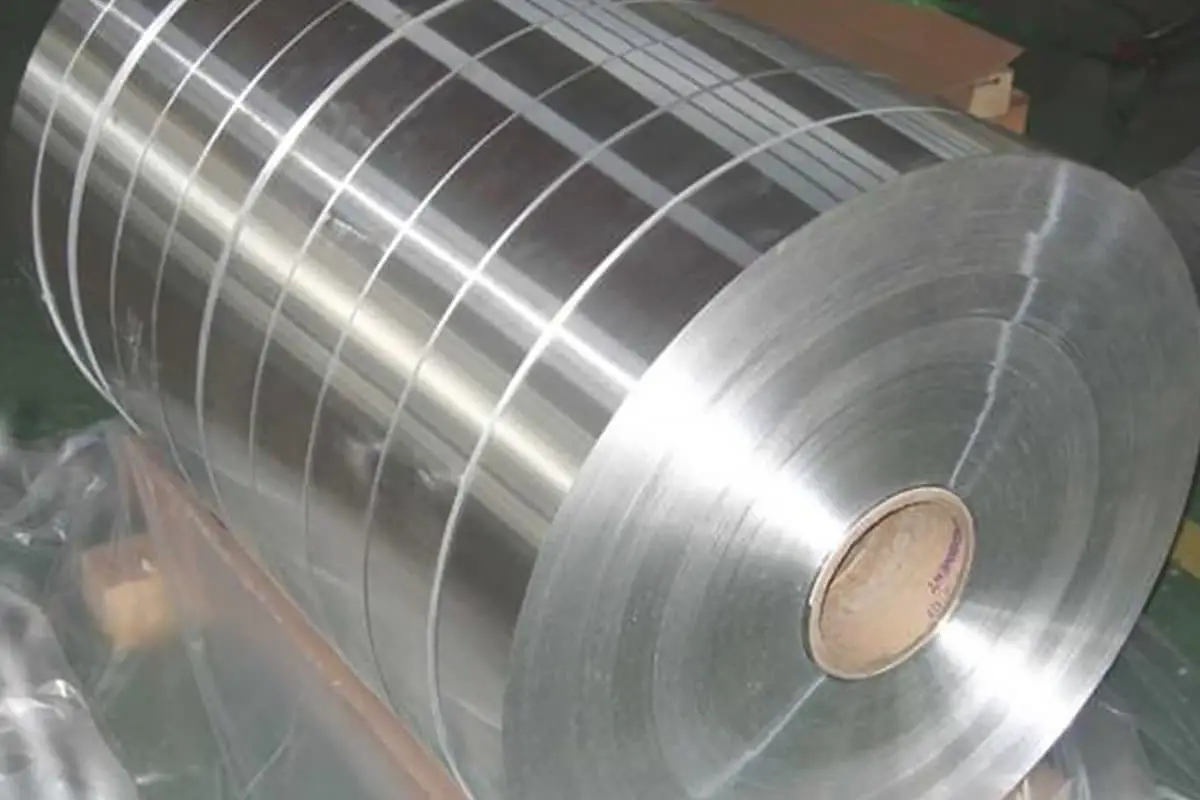
SAW. Comparison of physical properties of SUS304 and SUS443 (21CT)
| Steel type | 21CT | SUS304 |
| Density (g/ cm3 ) | 7.74 | 7.93 |
| Density(10-6Ω·cm) | 58 | 70 |
| Magnetism | Yes | No |
| Specific Heat 25℃(J/kg·℃) | 440 | 500 |
| Thermal Conductivity 100℃(W/m·℃) | 22.5 | 16.2 |
| Thermal expansion rate 20-100℃(10-6/℃) | 10.5 | 17.3 |
| Young's Modulus(Gpa) | 204 | 193 |
Compared to 304, 21CT has: Lower density, allowing an increase of approximately 2.5% in material area for the same weight, better thermal conductivity, lower thermal expansion, magnetism and excellent properties suitable for use with induction cookers.
VII. Comparison of mechanical properties between SUS304 and 443 (21CT)
| Steel type | SUS443 | SUS304 |
| Yield strength (MPa) | 305 | 260 |
| Tensile strength (MPa) | 483 | 645 |
| Extension rate (%) | 31 | 60 |
| Average R value | 1.3 | 1 |
| Hardness (Hv) | 161 | 185 |
| Conical cup protrusion (mm) | 38.6 | 37.7 |
| Foldability (bending angle 180°) | Good (R = 0T) | Good (R = 0T) |
The R-value is an indicator of the deep drawing performance of the material. The higher the R-value, the better the deep drawing performance!
VIII. Thermal conductivity comparison between SUS304 and 21CT
Test result graph for boiling 2 liters of water.
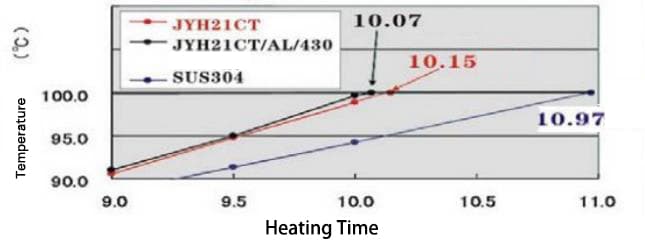
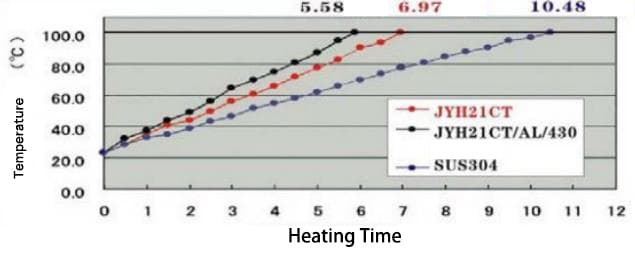
Conclusion: When heating with gas or induction stove, the thermal conductivity of 443 is higher than that of 304 stainless steel!
IX. Comparison of welding performance between 304 and 443 (21CT):
| Combination | TIG welding | MIG welding | Arc welding |
| Welding of the same type: 21CT and 21CT | □ | □ | □ |
| Welding of different types: 21CT and SUS304 | ■ | □ | □ |
- □: Corrosivity will not decrease or decrease very slightly
- ■: Corrosiveness will decrease
Note: For more detailed welding technical data and welding skills, you can contact our company to obtain it.
X. Comparison of corrosion performance results between 304 and 443 stainless steel plates
| Steel type | Cyclic Corrosion Test | Salt Spray Test (NSS) | Exposure Test | Corrosion of welded parts | |
| SUS443 |
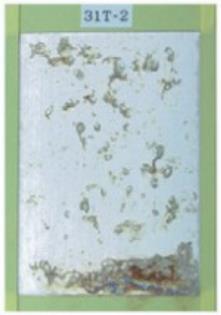
|
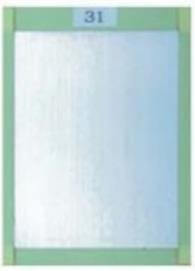
|
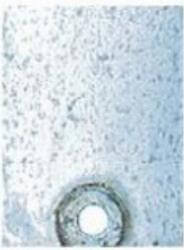
|
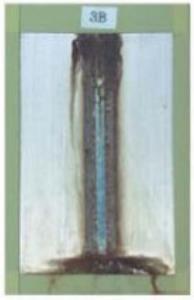
|

|
| SUS304 |
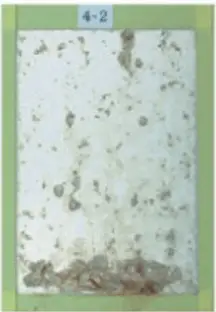
|
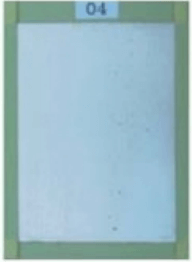
|
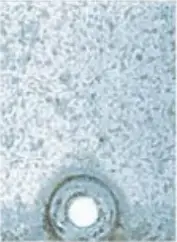
|
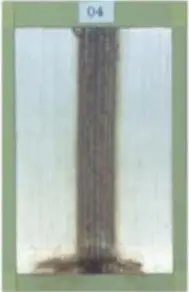
|
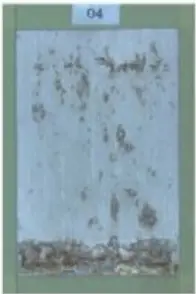
|
Methods for testing corrosion resistance:
1. Polished #600 stainless steel plate surface, spray salt water (5% NaCl, 35 ℃, 2 hours) → dry (60 ℃, 4 hours) → moisten (40 ℃, 2 hours), repeat 30 times.
2. #600 surface polished stainless steel plate, neutral salt water spray (5% NaCl, 35℃), 1000 hours.
3. Polished #600 stainless steel plate surface, exposed for 9 months in Chiba Prefecture, Japan, 10 meters from the coast, with sea salt adsorption amount of 0.25 mg.dm-2.day-1.
4. TIG welding, plate thickness is 0.8mm, contact start arc welding, using argon gas for protection, and polished with #600 surface after welding.
XI. Comparison of stress corrosion cracking tests between SUS304, SUS304 and SUS443
Comparison of stress corrosion cracking tests:
| Steel type | 304 Stainless Steel | 443 Stainless Steel |
| Presence or absence of pause | Breakdown occurs within ≤15 hours. | No breakage after 100h of testing |
| Appearance after testing |
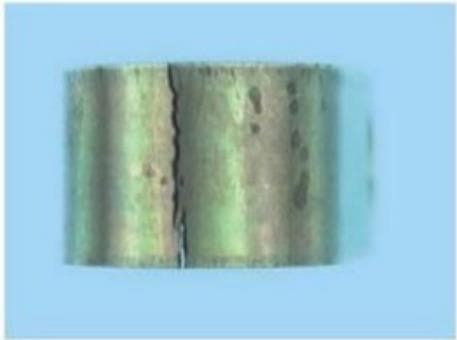
|
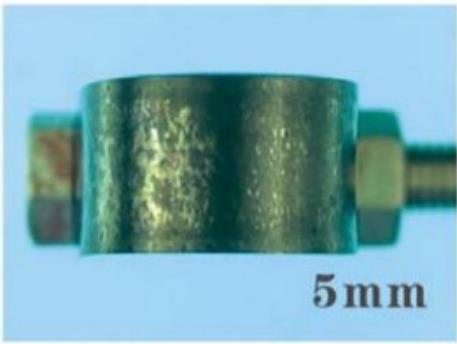
|
Condition: 42% MgCl2U, shape curvature JIS G 0576
Conclusion: 304 stainless steel can suffer from stress corrosion cracking, but 443 stainless steel is not at risk of this occurrence.
XII. 443 Certificate
| EU ROHS Certification | Complies with European Union environmental protection standards (SGS certificate) |
| International Health Certification | Conforms to the requirements of GB-9684-1988 “Hygienic Standard for Stainless Steel Food Utensils and Containers” |
| LFGB certification from Germany | Complies with German food and commodity laws and meets the metal release requirements of stainless steel tableware |
| US FDA Certification | Meets United States food safety regulatory standards and requirements for metal release in stainless steel tableware |

























































